Call Us On (877)-585-0677 To Speak To An Expert Today!
How To Stop Watching Pornography
A. Definition of Pornography
In 1964, Supreme Court Justice Potter Stewart tried to explain "hard-core" pornography, or what is obscene, by saying, "I shall not today attempt further to define the kinds of material I understand to be embraced... but I know it when I see it ..."
And I think you do too. Here’s a simple definition: “Pornography refers to any material, such as images, videos, or written content, explicitly created to stimulate sexual arousal. It often depicts sexual acts, nudity, and erotic behavior.”
B. Prevalence and Accessibility
More people are watching porn today than ever before in history. Think about it: you've probably seen more naked bodies than all your ancestors combined — pretty wild, right?
With the internet and smartphones, porn is everywhere and super easy to access. Studies show that a huge number of adults and teenagers watch it regularly.
For example, research shows that about 64% of young adults actively seek out pornography weekly or more frequently. This is true for nonreligious and religious homes.
According to the groundbreaking Barno group study, 70% of Christian youth pastors report that they have had at least one teen come to them for help in dealing with pornography in the past 12 months. 68% of church-going men and over 50% of pastors view porn on a regular basis. Of young Christian adults 18-24 years old, 76% actively search for porn.
Porn is now easier to access than ever. It’s literally just a few taps away, anytime, anywhere. And it’s not just harmless entertainment — it’s wrecking lives and tearing families apart. The damage it causes runs deep.
C. Purpose of the Article
The main goal of this article is to tackle the serious issue of porn addiction and offer real, practical steps to help people break free from it. If you're struggling with watching porn and want to stop, this is for you. Let's dive into strategies that can actually make a difference.
Understanding how harmful porn can be is the first step to taking back control of your life. By following a clear, structured plan, you can improve your mental, emotional, and social well-being, and start living the life you truly deserve.
Understanding the detrimental effects of pornography and following structured approaches, such as the #1 top-ranked Mindful Habit Recovery Program, can help individuals reclaim control over their lives and improve their mental, emotional, and social well-being.
II. Understanding the Impact of Pornography

A. Psychological Effects
1. Addiction and Compulsion
“Men, our sexual enegy is powerful. It has built empires, and destroyed empires. Evolutionarily and biologically, a Man’s sexual drive is one of the most powerful forces in human nature. Either your are controlling that power. Or that power is controlling you.” Craig Perra, Founder, Mindful Habit Recovery.
Pornography can lead to addictive behaviors, where individuals find themselves compulsively consuming explicit content despite negative consequences.
While “porn addiction” is not a recognized medical disorder, it is always a symptom of deeper unerlying issues, like low-self esteem, poor coping strategies, shame, an inability to proactively manage stress and anxiety, along with a host of other mental health and physical conditions.
Porn addiction works just like other behavioral addictions, trapping you in a cycle that's tough to break. It can seriously wreck intimate relationships — for a lot of people, porn is an intimacy killer. It's like putting a wall between you and the ones you care about most.
2. Impact on Mental Health
Watching porn regularly has been linked to a bunch of mental health problems, like higher levels of anxiety and depression. It messes with your mind more than most people realize.
Users may experience guilt, shame, and lowered self-esteem, which can further exacerbate these conditions.
Constantly seeing unrealistic portrayals of sex in porn can leave you feeling dissatisfied with your own sex life and even how you see your body. It's no wonder the market for penis enlargement pills and creams is exploding. But here's the truth: we believe none of it works, and it's all a scam designed to play off those insecurities.
B. Relationship Consequences
1. Effects on Intimacy and Sexual Expectations
Porn often shows sex in completely unrealistic and over-the-top ways, which can seriously mess with how people think intimacy should be. It creates a false picture, leaving viewers with distorted expectations of what real connections look like.
This can result in difficulties in achieving satisfaction in real-life sexual encounters, leading to frustration and decreased sexual fulfillment. More men have to masturbate to orgasm when they are intimate with a partner because they need the “death grip” and intense visual stimulation to orgasm.
Partners may also feel pressured to replicate behaviors seen in porn, which can be harmful and uncomfortable.
2. Impact on Trust and Emotional Connection
The discovery of a partner's pornography use can lead to feelings of betrayal and mistrust - this is called betrayal trauma. This can erode a relationship's emotional connection and intimacy, making it challenging to maintain a healthy and trusting bond.
The secrecy and shame that come with watching porn can drive an even bigger wedge between you and your partner. It creates tension, leads to fights, and pushes you both further apart emotionally. The more it’s hidden, the more damage it does to the relationship.
It’s important to note that it’s not just the porn that’s the issue in relationships, it’s the LYING about it that does the most damage.
It’s why comprehensive treatment programs like Mindful Habit Recovery are critical to addressing not just the porn use, but the lying. In fact, “the porn is ALWAYS the symptom of deeper underlying issues,” says the founder of Mindful Habit Recovery, Craig Perra.
C. Social and Professional Repercussions
1. Potential Effects on Social Interactions
Excessive consumption of pornography can lead to social withdrawal and isolation.
Some people start preferring the virtual satisfaction they get from porn over real-life connections. This leads to a loss of interest in building or maintaining meaningful relationships, and it takes a serious toll on their social life and overall well-being. It's like trading real human connection for a shallow, temporary fix.
“The opposite of addiction isn’t sobriety, it’s connection.” Jonathan Hari. Porn addiction is an isolating condition contributing to the crisis of male loneliness.
Fifteen percent of men today say they have no close friendships, a fivefold increase since 1990. This helps to explain why suicide is so common among men. In the Equimundo survey, a whopping 44 percent of men reported having had thoughts of suicide over the past two weeks. Men are suffering and the shame that comes with porn-induced isolation is making this crisis worse.
“This is why using a recovery program that includes community is so important. Community drives vulnerability and accountability and is critical to creating and sustaining a great life. Men in our Mindful Habit Recovery Program immediately dive into a powerful community of men who are committed to supporting each other and creating a great life.” Craig Perra, Founder Mindful Habit Recovery.
2. Impact on Professional Life
The compulsive urge to watch porn doesn’t just stay in your personal life—it can creep into your work life too. People often find themselves distracted at work, struggling to stay focused, which can tank their productivity and lead to serious career setbacks. It’s like your addiction starts pulling the strings, even when you’re supposed to be at your best.
In extreme cases, accessing pornography in the workplace can result in disciplinary action or job loss, severely impacting one's professional reputation and opportunities.
“Because of liability, many companies have a zero-tolerance policy for using porn on a company device. If you are nibbling around this edge, get help immediately. This is high-risk behavior that could get you fired. I’ve worked with hundreds of men who started with me after a termination meeting with HR. Reach out before that happens.” Craig Perra, Founder, Mindful Habit Recovery.
III. Recognizing the Problem
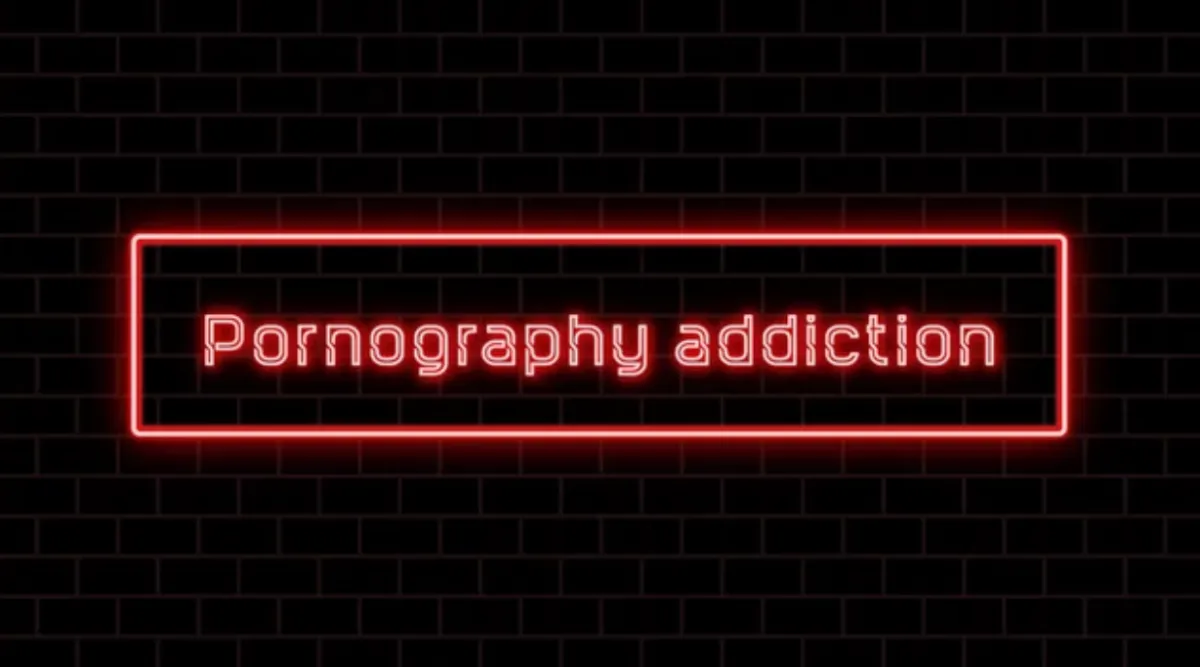
A. Signs of Pornography Addiction
1. Frequency and Intensity of Consumption
A key sign of porn addiction is watching it more often and needing more intense content to feel the same level of arousal. As the consumption ramps up, so do the negative consequences.
People spend more time glued to porn, diving into more extreme stuff, all while their self-esteem takes a nosedive. It’s a downward spiral that can be hard to break.
2. Interference with Daily Life and Responsibilities
When watching porn starts to take over your daily life—skipping work, neglecting school, ditching hobbies, or blowing off social plans—it's a big red flag.
If porn becomes more important than handling your responsibilities, it's a clear sign there's a problem that needs attention.
“Being a porn addict and living a great life are oxymorans. You can’t have both. Your sexual energy is powerful - control it or it controls you.” Craig Perra
B. Self-Assessment
1. Tools and Questionnaires to Evaluate the Level of Dependency
There are different self-assessment tools and questionnaires out there that can help you figure out just how dependent you are on porn.
These can be useful for getting a clearer picture of where you stand and whether it’s time to take action.
These tools often ask about the frequency of porn use, the extent to which it affects daily life, and the emotional impact of consuming. Some popular assessment tools include:
The Mindful Habit Recovery Questionnaire is a very simple assessment tool designed to help you evaluate the impact of your secret sexual behaviors. It takes less than 10 minutes to complete, and you can do it on your own, without a therapist or counselor.
The Pornography Addiction Screening Test (PAST): This test helps identify problematic porn use by assessing patterns and behaviors associated with addiction.
The Sexual Addiction Screening Test (SAST): While broader in scope, this test can highlight issues related to sexual behaviors, including porn addiction and sex addiction. This test is often administered by a therapist which increases it’s cost.
Find an expert who can quickly assess your problem and help you find practical solutions. You don’t need to answer 500 questions to tell you that you have a problem, that your wife is very hurt, and that you need help accelerating your journey to healthy sexuality and a great life. Start with the Porn Addiction Quiz here.
“Mindful Habit clients get great value from our highly effective practical approach. Clients need more than talking about their feelings once per week with someone who doesn’t know what they are going through. Our clients need expert advice, a structured path, and a powerful community (and support for their spouse) to accelerate and sustain their journey. Mindful Habit Recovery includes all of that and more. Read what actual clients say by clicking here,” says Craig Perra, Founder.
2. Importance of Acknowledging the Issue
Recognizing and acknowledging the problem is the first crucial step toward recovery. “De-Nile is the longest river in the world.” Denial or minimizing the issue can prevent individuals from seeking help and making necessary changes.
Admitting there’s a problem is all about being real with yourself—recognizing how porn is messing up your life and deciding it’s time to do something about it. It’s the first step toward making a real change.
Accepting that there’s an issue opens the door to real recovery and finding the right strategies and support to help you. Ask yourself this: Is my porn use healthy? If the answer is no, follow up with Why is it unhealthy? Being honest with these questions is key to understanding the problem and moving forward.
Read what Founder Craig Perra has to say:
“Acknowledging the impact of porn is ridiculously hard for men since we’ve grown up with it. Porn was a right of passage for many of us that brought pleasure and fun.
It takes a lot of courage and self-reflection to acknowledge that something that used to bring us so much joy now brings so much pain. Once your recognize that your sexual energy is powerful, it gets easeir to assess how you are channeling that power.
And please be kind to yourself. Without help, you are almost destined to fail because using pleasure to escape pain and discomfort (and lying about it) started in early childhood, often pre-pubety for most boys. Stopping watching porn is very, very difficult.”
Steps to Quit Porn
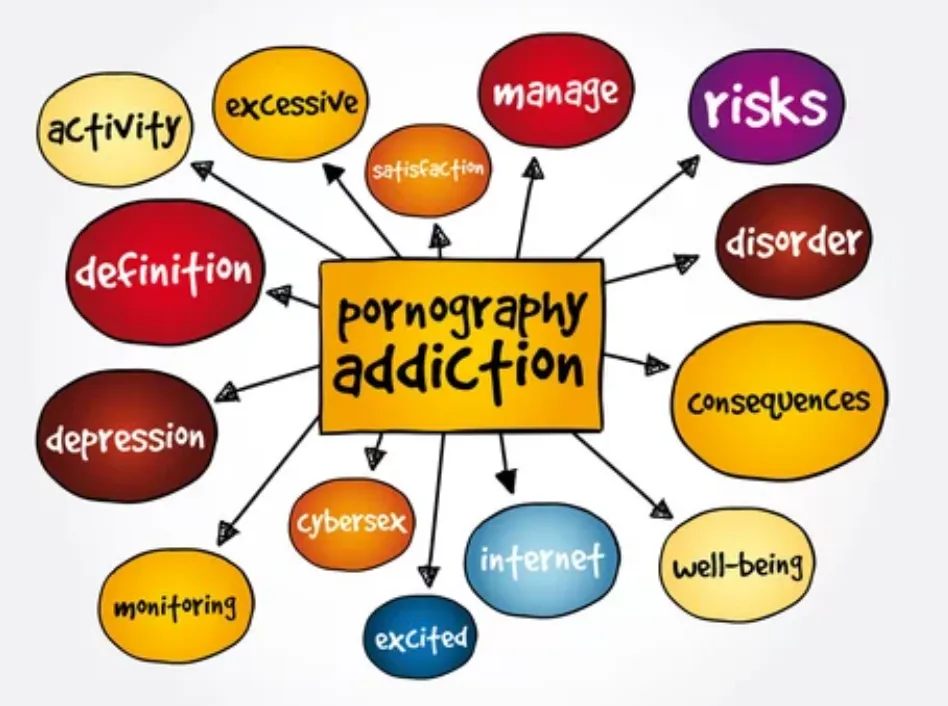
IV. Setting Goals and Building Motivation
A. Defining Personal Reasons
Identifying Personal Motivations to Quit
Take a moment to think about why you really want to stop watching porn. Your reasons could be personal—maybe you want to improve your mental health, strengthen your relationships, be more productive, stay true to your values or faith, or just feel more in control and fulfilled in life. Whatever your reasons, they’re important and can guide you on the path to change.
Write down these motivations and keep them in a visible place to remind yourself why quitting is important.
Understanding your “why” is critical and it’s almost impossible to stop without a clear vision and purpose.
A study published in the Journal of Substance Abuse Treatment found that individuals who had a strong intrinsic motivation for quitting (e.g., personal health, family relationships) were more likely to remain abstinent at a 6-month follow-up compared to those motivated by external factors (e.g., pressure from others). Journal of Substance Abuse Treatment, "Intrinsic Motivation and Substance Use Treatment Outcomes," 2020.
Setting Clear, Achievable Goals
Establish specific, realistic goals to stop watching porn by doing other activities to feel better about yourself. “To break a habit, you must make new habits, that meet the right needs.” Your success lies in doing something else.
When it comes to coping with porn addiction, your goals might include cutting down on how often you watch, staying away from triggers that lead to it, and ultimately quitting for good. Setting these clear goals gives you something to work toward and keeps you focused on breaking the habit.
Take your long-term goal of quitting porn and break it into smaller, more manageable steps. For instance, begin by cutting down the amount of time you spend watching porn each week. As you gradually reduce it, work towards complete abstinence.
Along the way, focus on boosting your self-care—like exercising, meditating, or engaging in hobbies that fulfill you. Small wins add up and help keep you on track.
Goals have to be realistic, because here's the hard truth: most men can't stop watching porn on their own, even if they desperately want to. For many, porn and masturbation have been their go-to coping strategy for decades.
When you set goals that are impossible to reach, it only makes the problem worse. Each time you "fail," you end up feeling worse about yourself, and that hits your self-esteem hard. This creates a vicious cycle where you turn back to porn to escape those negative feelings, and the addiction tightens its grip.
B. Creating a Vision of a Porn-Free Life
Visualizing Benefits and Positive Changes
Picture how much better your life will be once you quit porn. Think about the benefits: better mental health, stronger relationships, higher self-esteem, and more time to focus on things that actually matter.
Now, visualize yourself living that reality—feeling proud, fulfilled, and in control. Holding on to that image can strengthen your resolve and keep you motivated to break free from porn for good.
Writing a Personal Mission Statement
Draft a personal mission statement that encapsulates your reasons for quitting pornography and the vision you have for your life without it. This statement should be positive and motivational, serving as a guiding principle for your journey.
An example mission statement could be: "I am committed to living a life free from pornography, focusing on personal growth, healthy relationships, and achieving my fullest potential because I am a man of integrity and I don’t lie to my wife."
Keep revisiting and tweaking your mission statement to make sure it stays in line with your changing goals and motivations.
As you grow and your reasons for quitting evolve, your mission should reflect that, keeping you focused and driven.
Step 2:
V. Developing a Plan
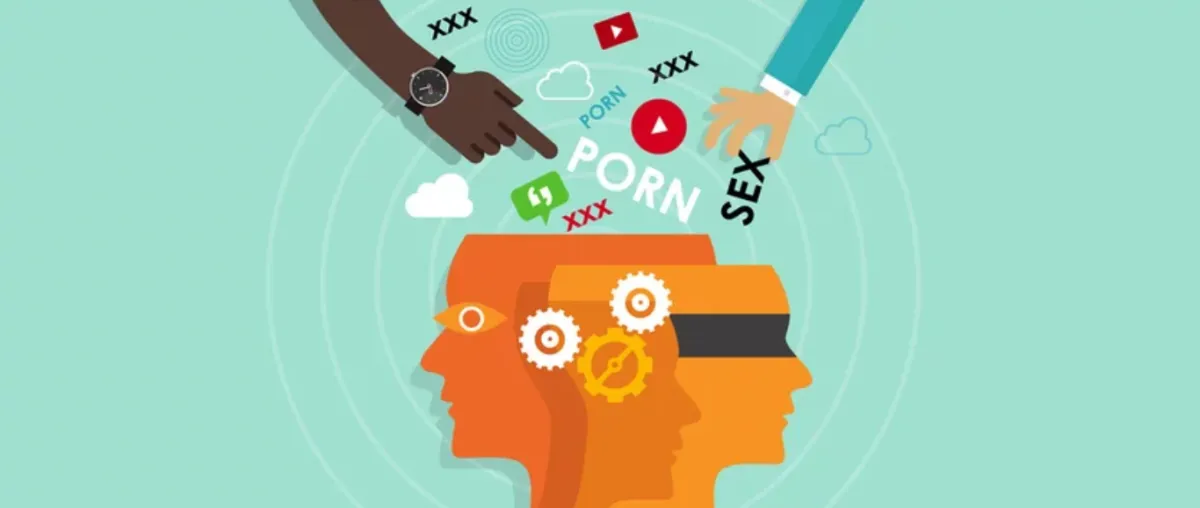
A. Avoiding Triggers and High-Risk Situations
1. Identifying Triggers
Common Triggers: Stress, loneliness, boredom, fatigue, certain times of the day, or specific situations can act as triggers.
Personal Triggers: Keep a journal to note when and why you feel the urge to watch porn. This can help identify patterns and specific triggers.
2. Strategies to Avoid or Cope with Triggers
Avoidance: Identify and avoid situations that typically lead to porn use. This might mean changing your routine or environment.
Stress Management: Develop healthy ways to manage stress, such as through exercise, mindfulness, deep breathing exercises, or hobbies. Practicing mindfulness WILL change your life.
Social Connections: Increase social interactions to combat loneliness. Spend time with friends or family, or join social groups. “The opposite of addiction isn’t sobriety, it’s connection.” Jonathan Hari.
Mindfulness and Awareness: Practice mindfulness to stay present and aware of your urges. Techniques such as meditation can help you manage these feelings without acting on them.
B. Establishing Healthy Habits and Routines
1. Importance of a Structured Daily Routine
Consistency: A structured routine helps eliminate idle time that can lead to porn use. Consistency in daily activities provides a framework to stay productive and focused.
Balance: Ensure your routine includes a balance of work, relaxation, and social activities. This balance helps reduce stress and boredom, which are common triggers.
2. Incorporating Exercise, Hobbies, and Social Activities
Physical Exercise: Regular exercise boosts mood and reduces stress. Aim for at least 30 minutes of physical activity most days of the week.
Hobbies: Engage in hobbies and interests that you are passionate about. This can include anything from reading and painting to playing sports or learning a new skill.
Social Activities: Increase your involvement in social activities. This helps build meaningful connections and provides support, reducing the likelihood of turning to porn out of loneliness or boredom.
C. Utilizing Technology
1. Installing Filters and Blockers on Devices
Blocking Software: Use software like Net Nanny, Covenant Eyes, or Qustodio to block access to pornographic websites on all your devices.
Parental Controls: Enable parental controls on devices to restrict access to explicit content. Even as an adult, these controls can serve as a useful deterrent.
2. Using Apps for Accountability and Tracking Progress
Accountability Apps: Apps like Covenant Eyes block content and send usage reports to an accountability partner, helping you stay accountable.
Tracking Progress: Use apps designed for habit tracking, such as HabitBull or Quitzilla, to monitor your progress and stay motivated. These apps can help you visualize your journey and celebrate milestones.
By creating a solid plan that helps you avoid triggers, build healthy habits, and use technology to your advantage, you can lay the groundwork to break free from porn addiction and start living a healthier, more fulfilling life.
Step 3:
VI. Seeking Support
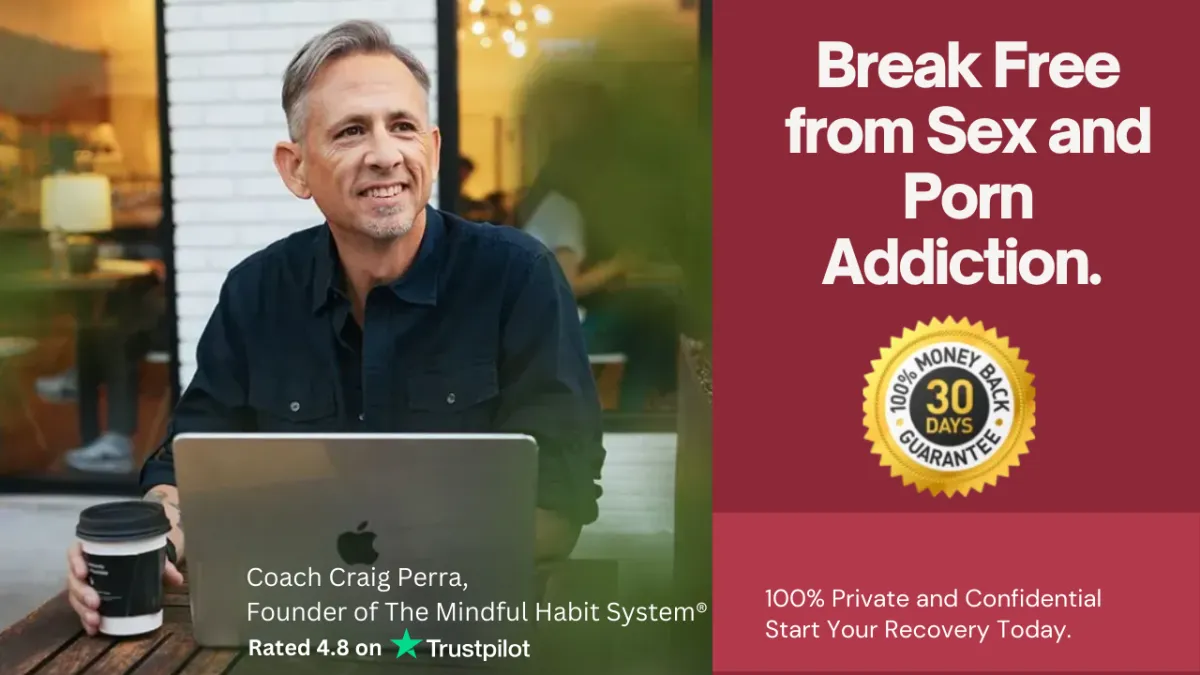
A. Professional Help
Choosing the right provider to help you create healthy sexuality and a great life is one of the most important decisions you can make.
Because porn addiction is such a complicated problem to solve it’s critical that you find a provider that teaches you skills and counsels you in the following critical areas necessary for long-term success.
1.Risk Management
2.Self-care
3.Self-esteem
4.Self-control
5.Direction & Purpose
6.Healthy Sexuality
7.Connection & Community
8.Accountability (metrics)
9.Faith/Spirituality
10.Gratitude
There is only one provider in the world that addresses each of these critical systems in a structured training program, led by world-recognized experts. With over 400+ 5-star EXCELLENT testimonials, Mindful Habit Recovery’s 16-Week At-Home Intensive provides a comprehensive solution for both husband, the addict, and wife, the betrayed partner.
1. Therapy Options
Cognitive-Behavioral Therapy (CBT): CBT is effective in treating addiction by helping individuals identify and change negative thought patterns and behaviors. It can help you develop healthier coping mechanisms and strategies for managing urges.
Counseling: Counseling provides a supportive environment to explore underlying issues related to porn use, such as low self-esteem, relationship problems, or emotional distress. It can be done individually, with a partner, or in a group setting.
Other Therapies: Consider other therapeutic approaches like mindfulness-based therapy, psychodynamic therapy, or acceptance and commitment therapy (ACT), porn addiction coaching, depending on your specific needs and preferences.
2. Finding a Qualified Therapist or Counselor
Research: Look for therapists or counselors who specialize in depression, anxiety, men’s mental health issues and sexual health. Online directories, such as those provided by the American Psychological Association or Psychology Today, can help you find qualified professionals.
Referrals: Ask for recommendations from healthcare providers, friends, or family members who may know reputable therapists.
Interviews: Schedule consultations with Craig Perra to discuss their approach and determine if they are a good fit for your needs.
B. Support Groups and Communities
1. Benefits of Joining Support Groups
Shared Experiences: Support groups provide a space to share experiences with others who understand the challenges of overcoming porn addiction. This can reduce feelings of isolation and offer practical advice.
Accountability: Regularly attending support groups helps maintain accountability and motivation. Members can encourage each other and celebrate progress together.
Emotional Support: Support groups offer emotional support and understanding from people who are going through similar struggles, which can be incredibly empowering.
2. How to Find and Engage with Supportive Communities
NoFap: NoFap is an online community dedicated to helping individuals quit porn through shared experiences and mutual support. It offers forums, resources, and challenges to stay committed.
Online Forums: Websites like Reddit (e.g., r/NoFap) and other addiction recovery forums provide platforms for discussion and support.
Local Support Groups: Look for local support groups through community centers, religious organizations, or addiction recovery networks.
Engagement: Actively participate in discussions, attend meetings, and connect with other members. Sharing your journey and supporting others can strengthen your commitment to quitting.
C. Family and Friends
1. Talking to Loved Ones About the Issue
Honesty: Be open and honest with trusted family members or friends about your struggle to rid of pornography addiction. Transparency can build trust and understanding.
Communication: Explain how porn addiction has affected you and your relationships. Discuss your goals and ask for their support in your journey.
Boundaries: Set clear boundaries about what kind of support you need. For example, you might ask them to check in on you regularly or avoid certain topics.
2. Building a Support Network of Trusted Individuals
Select Trusted Individuals: Choose people who are supportive, non-judgmental, and willing to help you stay accountable.
Regular Check-ins: Schedule regular check-ins with your support network to discuss your progress, challenges, and any setbacks you may experience.
Involvement: Encourage your support network to stay involved in your recovery journey by attending therapy sessions with you, if appropriate, or participating in related activities.
Seeking support from Professional Coaching Program, Self Study Program, joining supportive communities, and involving trusted family and friends can significantly enhance your ability to quit pornography and maintain a healthier lifestyle.
Step 4:
VII. Addressing Underlying Issues
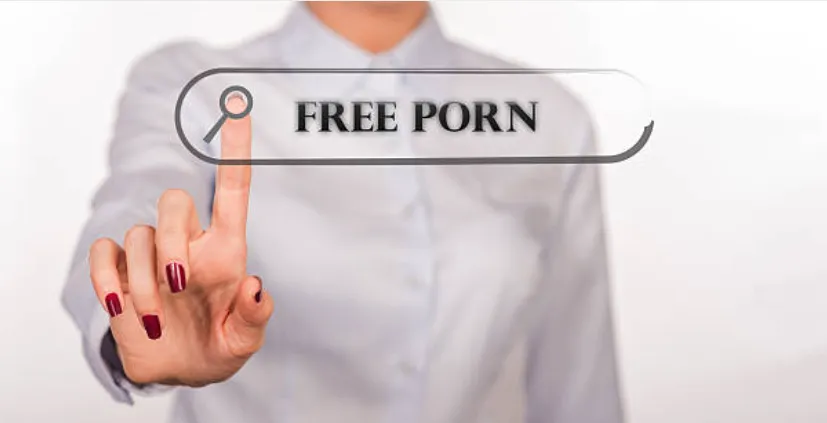
A. Emotional and Psychological Factors
1. Dealing with Stress, Anxiety, and Depression
Stress Management Techniques: Incorporate stress-reduction techniques such as deep breathing exercises, mindfulness meditation, progressive muscle relaxation, and yoga into your daily routine.
Therapy: Seek professional help from a therapist or counselor to address underlying anxiety and depression. Cognitive-behavioral therapy (CBT) is particularly effective in treating these conditions.
Lifestyle Changes: Make lifestyle changes that promote mental well-being, such as regular physical activity, a healthy diet, adequate sleep, and avoiding excessive caffeine and alcohol.
Support Groups: Join support groups or therapy groups where you can share your experiences and learn coping strategies from others facing similar issues.
2. Exploring Self-Esteem and Body Image Issues
Positive Affirmations: Practice positive self-talk and affirmations to challenge negative beliefs about yourself. Write down positive statements and repeat them daily.
Self-Compassion: Develop self-compassion by treating yourself with kindness and understanding, especially during times of struggle or failure.
Therapeutic Interventions: Work with a therapist to explore and address issues related to self-esteem and body image. Techniques such as CBT and acceptance and commitment therapy (ACT) can be particularly helpful.
Healthy Activities: Engage in activities that boost your self-esteem and body image, such as physical exercise, creative pursuits, and social interactions with supportive friends and family.
B. Improving Relationship Dynamics
1. Strengthening Communication with Partners
Open Dialogue: Foster open and honest communication with your partner about your struggles with pornography and your commitment to on how to stop watching pornography. Share your feelings and listen to their concerns.
Active Listening: Practice active listening by giving your partner your full attention, validating their feelings, and responding empathetically.
Conflict Resolution: Learn and apply effective conflict resolution skills to address disagreements in a healthy and constructive manner.
Couples Therapy: Consider couples therapy to improve communication, resolve conflicts, and strengthen your relationship. A therapist can provide a neutral space to discuss sensitive issues and facilitate understanding. Mindful Habit Recovery recommends a Gottman Trained Therapist or a Gottman Treatment Program for Couples work.
2. Addressing Intimacy Issues in Relationships
Emotional Intimacy: Focus on building emotional intimacy by spending quality time together, sharing experiences, and expressing love and appreciation.
Physical Intimacy: Work on improving physical intimacy through non-sexual touch, affectionate gestures, and open discussions about sexual preferences and boundaries.
Therapeutic Support: Seek the help of a sex therapist or relationship counselor if intimacy issues are deeply rooted or challenging to resolve on your own.
Patience and Understanding: Be patient with yourself and your partner as you work through intimacy issues. Understand that rebuilding intimacy takes time and effort from both parties.
By addressing underlying emotional and psychological factors and improving relationship dynamics, you can create a more supportive environment to get rid of pornography addiction and foster overall well-being.
Step 5:
VIII. Developing Long-Term Strategies

A. Maintaining Progress
1. Regularly Reviewing and Adjusting Goals
Check-In Periodically: Make it a habit to regularly check in on your progress toward quitting porn. Use that time to see if your goals are still working for you or if they need any adjustments to keep you on track and moving forward.
Reflect on Challenges: Take some time to reflect on the challenges you've encountered and think about whether your goals are still realistic and achievable. Adjust them if needed to ensure they stay manageable and keep you moving forward.
Modify Goals as Needed: Stay flexible and open to adjusting your goals as you learn and grow on this journey. As you progress, set new milestones to aim for, making sure they align with your evolving needs and experiences. Keep moving forward at your own pace!
2. Celebrating Milestones and Achievements
Acknowledge Progress: Celebrate every success and milestone, no matter how small it seems. Take a moment to recognize and appreciate the effort you’ve put into breaking free from porn addiction. Each step forward is worth celebrating!
Reward Yourself: Give yourself rewards when you hit major milestones. Whether it’s a special outing or buying something you’ve had your eye on, treating yourself can make the journey feel more rewarding and keep you motivated to keep going.
Share Achievements: Share your wins with your support network—whether it’s friends, family, or an online group. Their encouragement and validation can give you that extra boost to stay motivated and keep pushing forward on your journey.
B. Relapse Prevention
1. Understanding That Relapse Can Happen
Acceptance: Understand that relapse is a normal part of the recovery journey for many people. It doesn't mean you’ve failed—it’s just a temporary setback. What matters most is getting back up and continuing to move forward.
Learn from Relapses: Rather than getting stuck in guilt or shame after a relapse, see it as a chance to learn. Figure out what triggered it or what patterns led you there, and come up with strategies to avoid those situations in the future. Each slip-up can teach you something valuable to help you stay on track.
Stay Committed: Think of relapses as just bumps in the road, not reasons to quit. Stay focused on your goal of quitting porn, and use those setbacks as fuel to keep pushing forward. Every stumble is a chance to learn and grow stronger.
2. Strategies to Cope with and Recover from Setbacks
Self-Compassion: Show yourself some compassion when you slip up. Beating yourself up will just make it harder to bounce back. Instead, treat yourself with kindness, understand that relapses happen, and focus on getting back on track.
Reach Out for Support: Rely on your support network when things get tough. Open up to people you trust about your struggles—they can offer encouragement, understanding, and a fresh perspective to help you stay strong.
Revisit Your Plan: Take a look at your quitting plan and see if you need to make any changes or add new strategies to prevent future relapses. If needed, introduce new coping mechanisms or reach out for professional help to keep yourself on track.
Stay Positive: Keep a positive mindset and focus on how far you've come, rather than getting stuck on setbacks. Remember, setbacks are temporary, and you’ve got the strength and resilience to push through them and keep moving forward.
By regularly checking in on your progress, celebrating your wins, and using strategies to prevent relapse, you can boost your chances of long-term success in quitting porn and living a healthier, more fulfilling life.
IX. Personal Stories and Testimonials
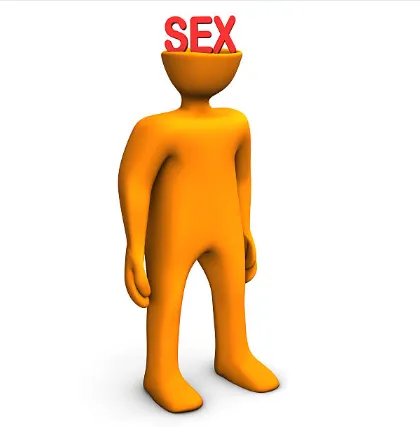
A. Success Stories
Read what over 400+ clients have said about the Mindful Habit System and the mind-blowing results they achieved. With over 400 Excellent 5-star verified testimonials, Mindful Habit Recovery is the #1 highest-rated treatment program in the world.
Click here to read the verified testimonials and click here to read more about the 16-Week Rapid Turnaround At-Home Intensive.
B. Lessons Learned
Identifying Triggers: Many people have discovered that recognizing and avoiding triggers like stress or loneliness is key to their recovery. By learning healthier ways to cope with these triggers, they’ve been able to prevent relapse and stay on track.
Building a Support Network: Building a support network of friends, family, and others in recovery played a huge role in staying accountable and motivated. Having people to lean on during tough times offered the encouragement and understanding needed to keep going.
Self-Compassion: A key lesson for those who successfully quit porn was learning self-compassion and forgiveness. By accepting setbacks with kindness and without harsh judgment, they were able to move forward with even more determination to stay on track.
X. Resources and Tools
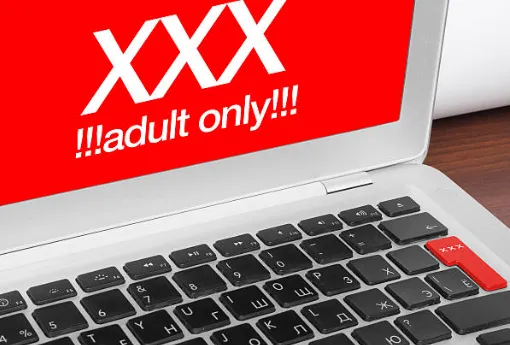
A. Books and Literature
Breaking The Cycle, by George Collins: This book explores the science behind pornography addiction and offers practical strategies on how to get rid of pornography addiction.
Atomic Habits, by James Clear: This book should be mandatory reading for everyone struggling with any form of compulsive behavior. It is the best book on habits available today.
B. Online Resources
NoFap: NoFap is an online community and resource center for individuals looking to quit pornography and masturbation. It offers forums, articles, and tools for support and accountability.
Fight the New Drug: Fight the New Drug is a nonprofit organization dedicated to raising awareness about the harmful effects of pornography. Their website provides educational resources, personal stories, and tools for recovery.
C. Apps and Software
Covenant Eyes: Covenant Eyes is an accountability software that monitors internet usage and sends reports to chosen accountability partners. It helps individuals stay accountable and provides support in their recovery journey.
Quitzilla: Quitzilla is a habit-tracking app designed to help individuals break free from addictive behaviors, including pornography consumption. It allows users to set goals, track progress, and celebrate milestones along the way.
These resources and tools offer valuable support and guidance for individuals seeking to quit pornography and reclaim control over their lives.
Numerous resources are available to aid in the journey to recovery, whether through books, online communities, or mobile apps.
XI. Conclusion

A. Recap of Key Points
In this comprehensive guide, we've outlined strategies and advice to help individuals on how to stop watching pornography and reclaim control over their lives. Key points include:
Setting Clear Goals: Define personal motivations, set achievable goals, and visualize a life free from pornography.
Developing a Plan: Avoid triggers, establish healthy habits, and utilize technology to support your journey.
Seeking Support: Contact professionals, join support groups, and involve trusted loved ones in your recovery.
Addressing Underlying Issues: Explore emotional factors, improve relationship dynamics, and seek therapy when needed.
Developing Long-Term Strategies: Maintain progress, prevent relapse, and celebrate milestones along the way.
B. Encouragement and Final Thoughts
Quitting pornography is a challenging but achievable goal, and you are not alone in your journey. Remember that change is possible, and every step you take toward recovery is a step in the right direction.
Be kind to yourself, stay committed to your goals, and reach out for support when needed. You have the strength and resilience to overcome this obstacle and create a healthier, more fulfilling life.
XII. References
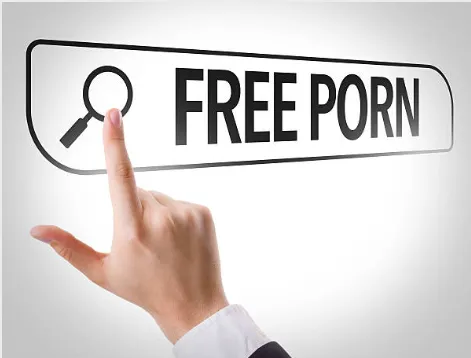
A. Citing Studies and Expert Opinions
Atomic Habits, Clear, James. Random House.
Maltz, W., & Maltz, L. (2008). The Porn Trap: The Essential Guide to Overcoming Problems Caused by Pornography. HarperCollins.
Collins, George, Breaking the Cycle, Free Yourself From Sex Addiction, Porn Obsession & Shame. (a powerful, no-nonsense program for helping readers identify their unhealthy sexual patterns, overcome sex addiction, and start living more productive lives) (2011).Journal of Substance Abuse Treatment, "Intrinsic Motivation and Substance Use Treatment Outcomes," 2020.American Association of Sexuality Educators, Counselors & Therapists. Find a Therapist. https://www.aasect.org/referral-directory
American Psychological Association. (n.d.). Find a Psychologist. Retrieved from https://www.apa.org/findapsychologist
NoFap. (n.d.). Home. Retrieved from https://nofap.com/
Fight the New Drug. (n.d.). About Us. Retrieved from https://fightthenewdrug.org/about-us/
Online Resources: The Mindful Habit® Workbook, Mindful Power® Training (Only $9 per month)
These references provide valuable insights and resources for individuals seeking to understand and address pornography addiction.
Quick Links
Call Us To Schedule Your Appointment:
Copyright @ 2026. The Mindful Habit® System | All Rights Reserved


